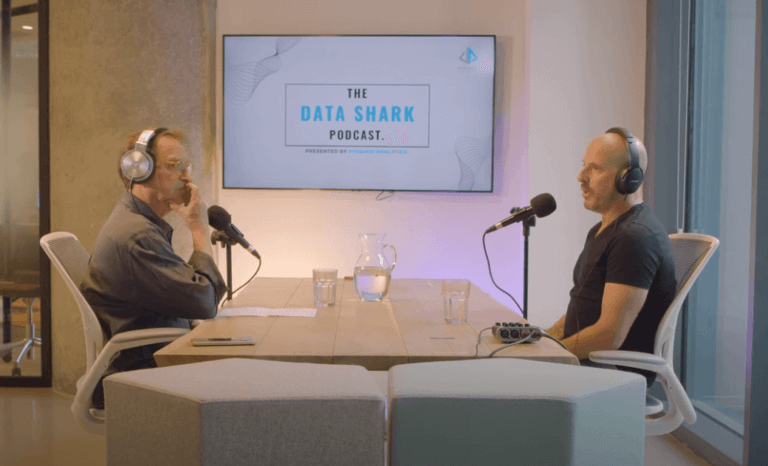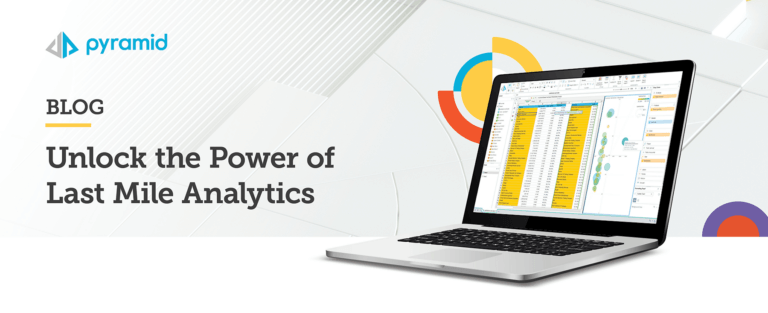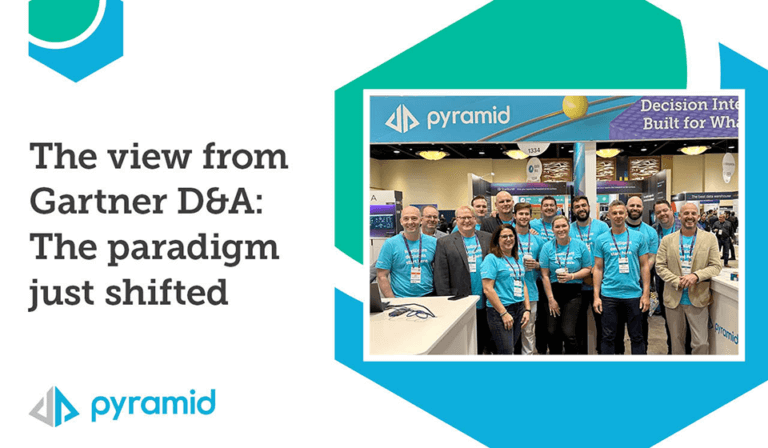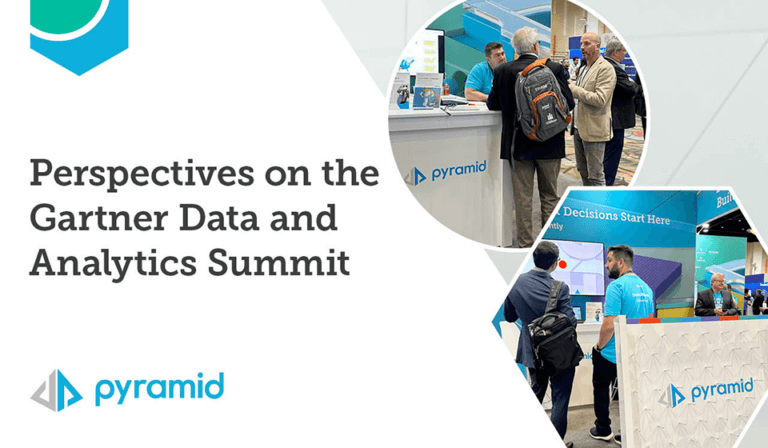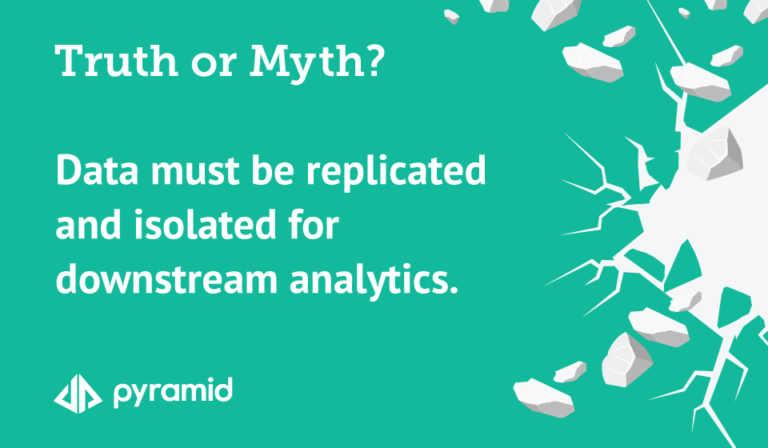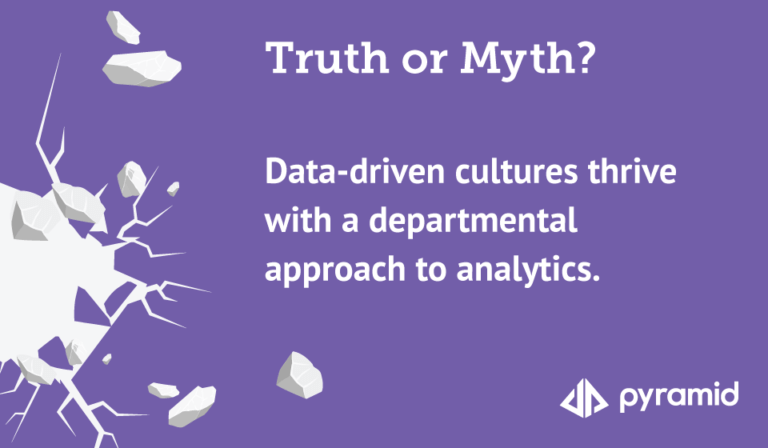A business decision supply chain contains a sequence of processes through which data owners (producers) can transform raw data into trusted and actionable business information for themselves and other users (consumers) to help make better business decisions. When integrated into a modern, cloud-ready, self-service analytics platform, users across the organization can collaborate with data to experience transformative changes.
This is the last post in a five-part series that explores how Pyramid Analytics aligns to a business decision supply chain framework that can galvanize analytics for users across the enterprise—reducing time to decisions, optimizing costs, and improving change management in the process.
Even in 2021, most modern companies remain data-rich but information poor, and “most still struggle to build data into their business strategies and, conversely, to align their data efforts to the needs of the business,” Harvard Business Review (HBR) reports. Indeed, the tenuous connection between data and real business value is a key concern within the business decision supply chain: the sequence of processes in which data experts turn raw data into timely and actionable information for decision-makers across the business.
Although the right technology is critical, most business leaders don’t realize this connection is people-based by nature. Nor is it something that can be imposed on employees by senior leaders because employees invariably turn to more successful alternatives if they’re available.
Enabling synergistic relationship between the wide variety of analytics consumers (anyone in the business who uses data to their job) and analytics producers (those who work with the data to make it useful and consumable) ensures a steady supply of self-sustaining insights arrives on a continuous basis. The parties rarely need top-down instruction or IT support, even as business needs evolve. This dramatically reduces IT costs and improves the speed of decisions, and it also allows for closer relationships to form across departments.
Strengthening connections within the Business Decision Supply Chain
We originally defined this relationship as part of an “analytics flywheel”: a conceptualization of an ideal business decision supply chain that demonstrates how this self-managing, self-perpetuating relationship can take effect:
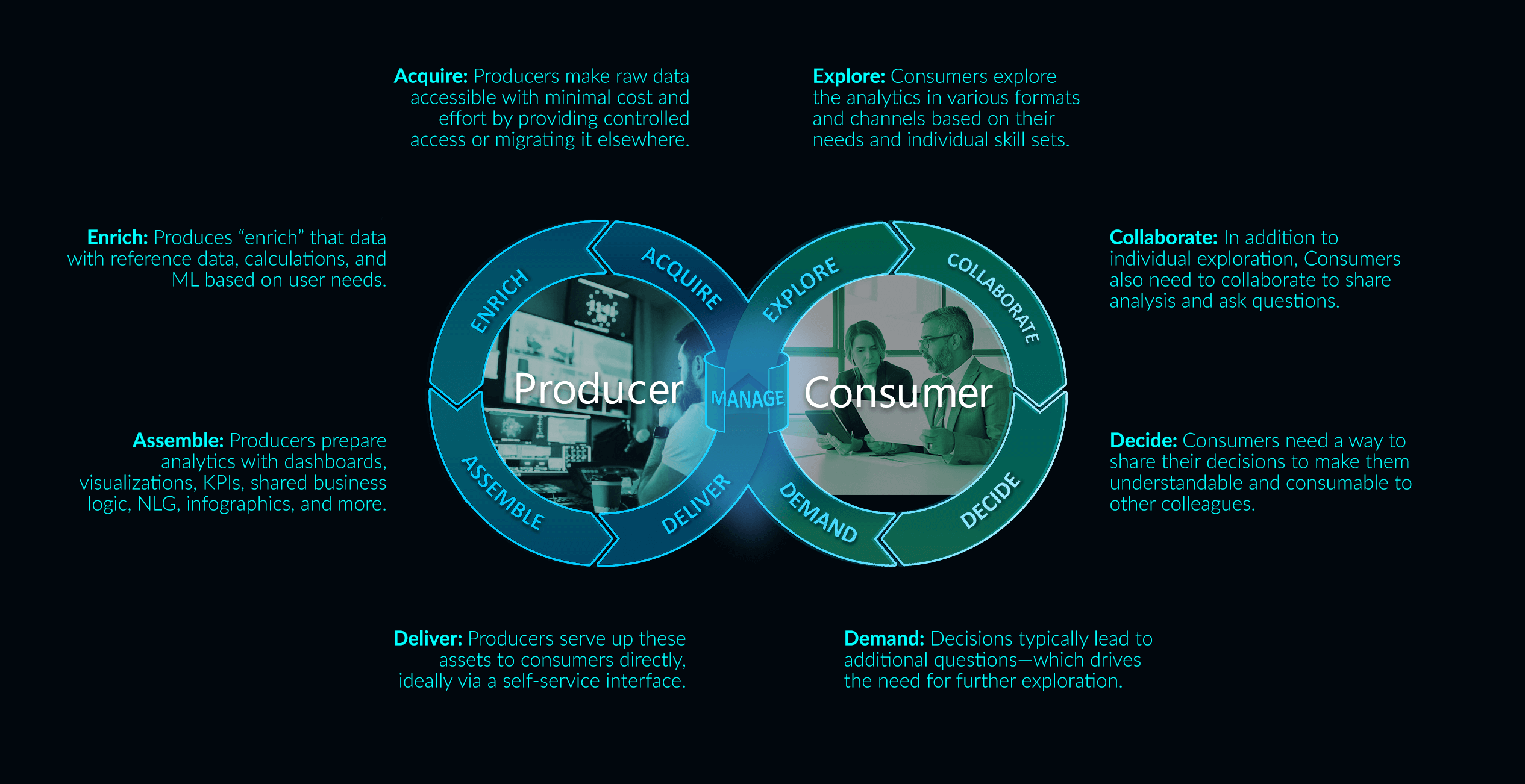
The Business Decision Supply Chain consists of discrete steps that allow Consumers (those who need data to make decisions) and Producers (those who prepare data for Consumers) to work together in a continuous cycle.
Even this unique design is not a new concept in principle. It describes the age-old workflow any enterprise uses to make sense of large amounts of data in a systematic way and to convert that data into actionable insights. What IS unique about this design is its self-sufficiency, made possible by a dedicated vertically integrated analytics and BI platform that serves all parties as a single source of truth.
Overcoming communicating difficulties by design
It’s only by facilitating a collaborative relationship among everyone involved that companies ensure the right insights consistently arrive in the hands of the right people, driving a competitive advantage at each level of the organization. By optimizing their consistent delivery, companies drive lasting business value without regular intervention by IT teams or business leaders.
Let’s re-visit X Sports, the company we looked at in first post in this business decision supply chain series. Before advanced analytics, the company’s head of sales had poor visibility across different regions of the United States, where she was forced to retrieve regional data at different times and share those data via Excel files with both her regional managers and her superior, Gerard, the COO. That data quickly became data and fragmented, and, as a result, each individual was working with both different and incorrect data.
Facilitating relationships between data consumers and data producers in an advanced analytics environment changes that. It means the COO has the right reports to collaborate with his fellow C-level executives; it means the head of sales can report to the COO as well as coordinate with regional managers using real-time, region-by-region insights; and it means actionable regional reporting for each regional manager, who nonetheless share data sources with both the head of operations and the COO. Each regional manager makes decisions based on a holistic view of company performance and resources—as does the COO in executive meetings with her C-level counterparts.
In this scenario, data is delivered through a streamlined process to support business decision-making and collaboration at all levels of the organization. With the right vertically integrated analytics platform, that data remains highly secure—data assets can be governed and managed and data managers know who is accessing data, all in a single environment. Data consumers each enjoy a personalized interface as well.
More importantly, users of all types are brought together unlike ever before—not by some imposition from senior leadership but by meaningful collaboration within a trusted and streamlined analytics environment. Advanced analytics of this kind is simply a reliable mechanism for producers and consumers to naturally share, collaborate, and improve business results through methods they perpetuate themselves.
Producer-consumer collaboration: the keystone to modern analytics
“Aligning your data efforts and strategy can seem daunting … but the resulting forward motion of business and data teams finally working together is powerful indeed,” says HBR.
As we continue in an unpredictable new decade, advanced analytics has proven its resiliency and value, establishing itself in the minds of technical and business employees. Democratizing data access, streamlining governance, and providing individualized interfaces and tools for a wide range of employees make the self-managing, self-perpetuating relationship between data producers and consumers possible.
Pyramid Analytics can become that “core nucleus of information,” enabling data consumers to track key trends, conduct business-critical analyses, and extend insights to colleagues in a safe and governed way. Members of data science, engineering, and BI teams can access data individually and empower those business users in new, competitive, and evolving ways as well.
Start making changes that will facilitate successful decision-making among all your teams for years to come. Contact us for a free internal analysis and take your first step into a more collaborative, secure, and data-driven future.
This concludes our five-part series on the Business Decision Supply Chain. Revisit any of the previous posts to learn more:






